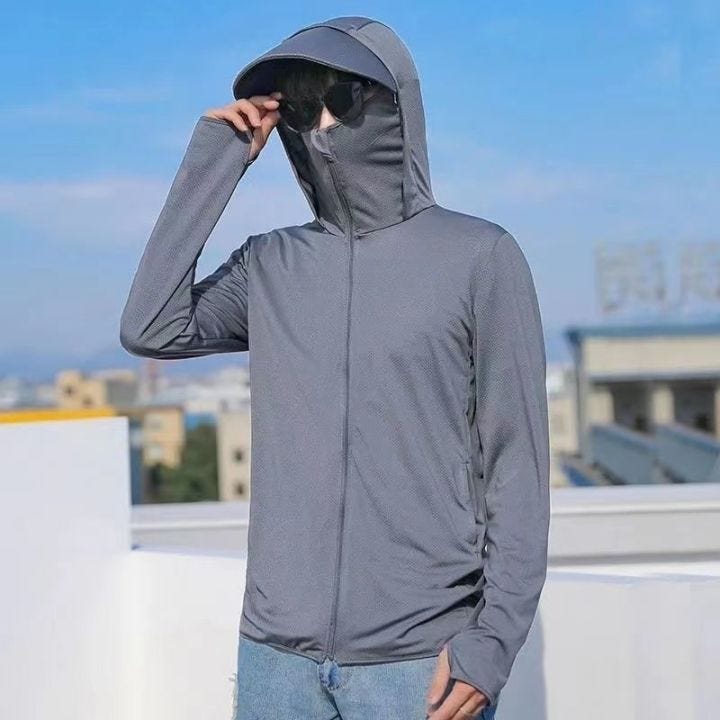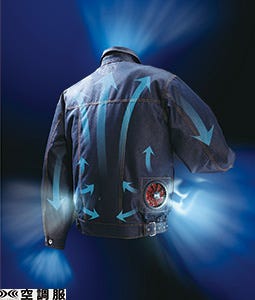From the outside looking in, Japan doesn’t seem to be a hot, tropical paradise. If you imagine a Japanese person sweating, you’d more likely imagine it due to stress than the sun. But for anyone who has been to Japan in the summer, especially during any prolonged heatwave, you’ll know that the sun can be as unbearable as any arid desert or tropical getaway.
It is of little surprise then, that the population has decided to protect themselves from the sun by all means. Most of these gadgets are Japan exclusives, while others are regional variants of sun protection methods we know and love. We’ll learn about all in this post
Sunwear over the eyebrows, way up high
Unlike the Western world which has largely dismissed hats in modern times, Japan has continued to embrace headgear. Seen as a practical and fashionable choice, hats of all types are worn, from knit caps in winter to wide brim straw hats in summer. There are several explanations to give to this.
One such reasoning might be the societal desire to hide and disguise balding. If everyone has a hat, then no one is seen with male pattern baldness. Another is perhaps the enduring popularity of baseball. This could have kept baseball caps in vogue, and as such all hats have been kept around. Yet the popularity of hats might not be something Japan needs to explain.
The real question should be, why are hats uncool in the West?
The least welcome of all hats might be able to explain this. Yes, the fedora. If you have somehow avoided the internet in the past 20 years but are reading Hidden Japan (good choice!), the fedora is seen as a symbol of insecure young men.
It is seen as a way that people would try “buying” coolness and class from mimicking old movie stars and thus garnered an unfortunate reputation. As an eye-catching and prominently displayed part of such outfits, the fedora became an easy identifier of someone who was trying too hard but had no knowledge of social norms. This association spread to hats in general being a way to burnish a personality and has left socially conscious Western men unable to wear many forms of headgear. For Westerners, hat culture can be summed up by American satirist PJ O Rourke, “A hat should be taken off when you greet a lady and left off for the rest of your life.”
The same sensitivities did not cross into Japan, so hats still live on. While not found in every wardrobe, the hat is just viewed as a functional and fashionable accessory for use in outdoor life.
All covered up
While sunscreen and clothing is enough for much of the world in protecting against sun damage, we neglect the fact that fairness is a prized quality in Japan. I’m not speaking about justice here (and no comment from me on Japan’s legal system today). This is regarding skin tone. A touchy subject but also a necessary one when understanding Japan’s relationship with the sun.
Responses have been shifting especially in the past few decades, but the traditional beauty standard in Japan has been quite simple. The paler, the better. To caveat: it is a centuries old standard and arguably not to do with race, does extend to much of Asia too, and is no longer a universal default here, BUT does play a major part in Japanese responses to darkened skin. Many valid criticisms of this persistent idea that pale is pretty, have been levelled, so this is as far as I will delve into the topic.
This stance has meant the development of summer long wear in Japan. As it sounds, these are clothes designed for the overwhelming heat, and the prevention of skin darkening. It has meant unique fabrics that do not stick to the skin, giving a formless feel to the body. These sun specific clothing manifests itself whenever you shop approaching summer.
Most stores advertise clothing that is UV protective, which is reflected in what is considered fashionable. I mean literally reflective; summer is often indicated by the emergence of shiny white raincoat-like attire. People often even use a mesh cover over the breathing area, creating Ninja X Beekeeper couture!
This style is still relatively common and found across Japan, but it is more closely aligned with middle-aged fashion. What is rarer is the fan variety. Designed for ongoing climate control, there are several companies competing to provide clothing with electrical fans integrated into the design. Such attire has been popular from a governmental perspective and has been promoted incessantly. As a positive, these items of clothing are very functional to keep people (workers) comfortable without costly indoor cooling, but the downside is that they still look like you’re wearing an appliance. The look is still in its infancy both in Japan and abroad, but companies are betting big that the ever warming planet will mean this will be everyday wear very soon!
Here comes the sunscreen
Growing up in Australia, I always assumed we had the best sunscreen. Not because we had any particularly amazing chemical engineers, but because sun protection was our thing. Sun damage was as central a part to our education as learning to read and write. A national motto of slip slap slop was drilled into every man, woman, and child (if you’re unaware, this is the mnemonic designed to teach kids to slip on a t-shirt, slap on a hat and slop on sunscreen) (Editor’s note: they’ve since extended it to slip slop slap seek slide which in their opinion doesn’t have the same pizazz). Defence was the goal against the invisible enemy, and so we all learnt to don the armour of the sun conscious.
We were taught that the price of venturing outside was the wearing of the greasy chemical. Little did we know that there was sunscreen out there that didn’t require slop. A mythical gel that wouldn’t butter you up like corn, but would instead feel pleasant. I speak of Japan’s least memorialised export. Biore Sunscreen.
What is this?
Even the packaging suggests that it doesn’t conform to the mass safeguarding that Australian sunscreen intoned. Instead Biore looks bespoke, like a product from a beauty line or skincare. The real magic is the texture. The way the sunscreen is designed is from a water base, not oil base. This is very discernible on the face, feeling like water or cream rather than oil.
Somehow Biore worked out that people would pay a premium to be both sun protected AND not be drenched in oil. Soon enough, the secret was out. Biore UV sunscreen has become Japan’s leading sunscreen and slowly trickled into the rest of the world through secret luggage channels and private messaging groups. In my research, I discovered that I’m not alone in my praise of this miracle substance. The brand has become viral on Tiktok, which finally has prompted Biore UV to launch in global markets such as Europe, Middle East and the USA. Finally, a positive news story from social media. Given my hyperbolic praise of the brand, I wish I was sponsored but as of now still just a fan.
Now you see me
What about the eyes?
This is perhaps a broad observation, but I’ve found many Japanese people to never wear sunglasses. Naturally the sun protective detective hat came on. At first there were no straight answers. I was told it was simply down to personal preference.
Just when I thought to chalk this down to me having a small sample size of people that didn’t wear sunglasses, there was someone willing to talk. They needed to stay concealed, so they wore sunglasses and a hat and met in the shadows of a dark carpark (actually just met with a friend).
They suggested that sunglasses in general made people look shady, no pun intended. It was historically associated with organised crime; people wore sunglasses to prevent easy identification. Even now, I was told that no one wants to cover their eyes.
My half-thought theory to explain this is that in Japan the eyes are a key part to connect and communicate, to which sunglasses can become a barrier. A parallel to facemasks in the West can be drawn. While sunglasses in the West and facemasks in Japan are seen as practical items of everyday use, the switch in context creates friction. When sunglasses are in Japan and facemasks are in the West that cultural shift loses valuable connection and communication.
Digression aside, I was offered one other explanation. How to put this delicately? There is a prevailing idea in Japan is that sunglasses are designed for a European face. As such, designs that work for people with larger facial features, in particularly the nose, often do not work with Japanese faces. Even for those who wanted to protect their eyes, fashion forward individuals find it difficult to get a fit for them. While there are growing sunglass brands that pitch directly to the Asian consumer and face contours, this remains an uphill battle.
Without the common protective shield of the sunglasses, Japanese culture has turned to another provider of shade. Even beyond the hats and fan clothing, this one is iconic. Keep reading Hidden Japan for further details on how people without sunglasses manage to protect their eyes.









Excellent. Dead on. All the points I looked for regarding the "history behind," I found with ease. You have dug deep and been rewarded with a new sub, sir. 夜露死苦
Yes, unfortunately there is a lot of confusion and ignorance about the sun. In fact, the best thing anyone can do for their health is to expose as much of their skin as possible to the sun's energy in moderation, especially after sunrise and before sunset, when the sun is below 30 degrees of elevation. It makes me despair to see people covered from head to toe on a nice sunny day.